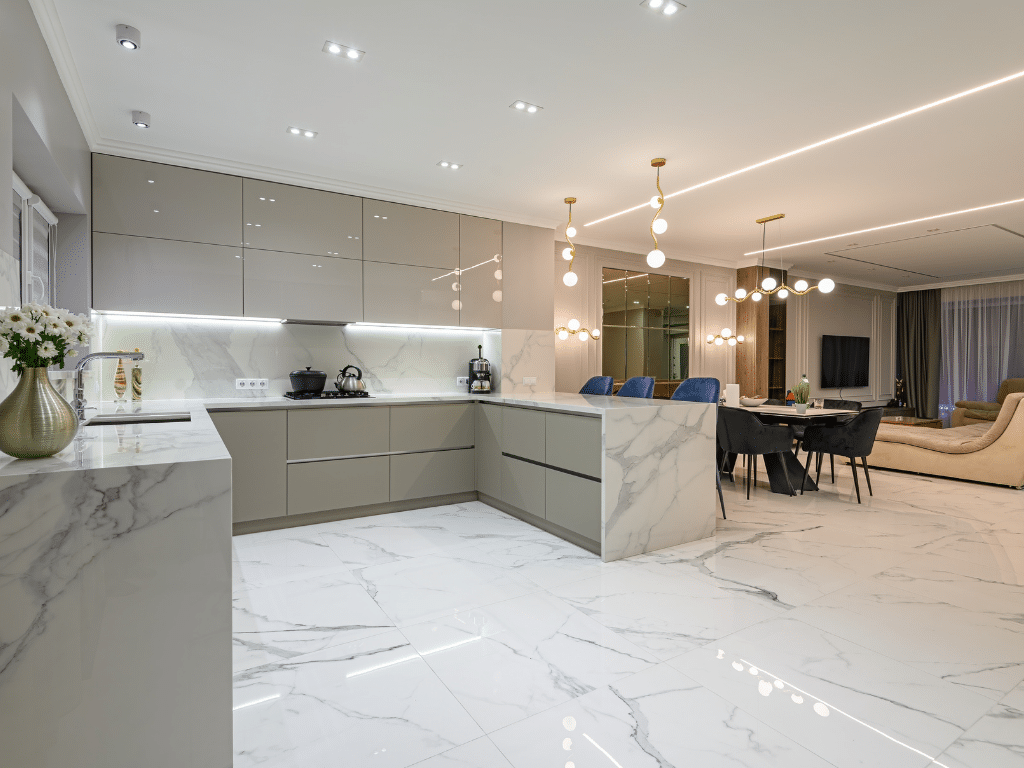
Marble countertops are among the most coveted around the world. People have been marveling at their beauty for thousands of years. Marble was the go-to material for the ancient Greeks and Romans, both for construction and carvings.
Over the years, marble has become a mainstay in people’s kitchens. Since people spend so much time in the kitchen already, why not make your countertops as unique and beautiful as they can be? Here are the four primary marble countertop advantages.
1. Easy to Shape
Marble is a soft stone that’s straightforward to work when it’s first quarried. When the miners first extract the marble, it’s much softer than it is after polishing and shaping.
Sculptors have picked marble as their stone of choice for thousands of years because of this reason. Sculptors like Michelangelo and the Greeks understood how important it was to use a material that they could shape with ease.
Since it’s initially so painless to shape, marble is great for countertops. Marble is the type of material that doesn’t chip or break in the initial carving. Once people shape and polish the marble, though, the stone becomes much more brittle and prone to chips.
2. Semi-translucent
Other than its shaping, the other reason why marble was such a popular material for carvings is because of its semi-translucent nature. To the naked eye, marble seems like it’s an opaque stone, but not everything is as it seems!
Marble allows rays of light to enter the stone, which then bounces off the interior of the marble until the ray of light enters our eyes. We call this process diffraction. Diffraction gives carved marble a glow or aura.
This phenomenon is best seen in sculptures, but you’ll also experience it from countertops. You’ll notice that on bright days, the top of your counter has a faint glow, a unique quality in marble.
3. Variety
One of the advantages of marble is its wide variety. You can find marble slabs with intense veins that you can almost feel, while others are nearly plain white with no veins.
Some people enjoy the look of marble veining more than others, so it’s up to you to choose how pronounced you want the veins to be. Some people don’t like veins because it can be difficult to find veins that go together, especially if you choose marble cut from different slabs.
Marble also isn’t always white. There are dark grays, blacks, and lighter colors, like beige or very pale pink. A wide variety of patterns and colors means you get to choose the countertop that will fit your kitchen’s theme seamlessly.
4. Heat Resistant
Marble countertops are extremely heat resistant. Although marble counters may not be strong when it comes to chips, scratches, and breaks, they can withstand a significant amount of heat. Marble counters can withstand heat because of their porous nature, which allows heat to disperse itself throughout the stone.
Many stones yellow when people apply heat to them. You won’t have to worry about immediate yellowing or stains from hot pots and pans with marble counters. You should never put a piping hot pot on your counters for more than a second, though, since extended exposure can cause stains.
5. Consider Marble
With all of those marble countertop advantages, why not consider them for your home? Contact our team at Washington Marble Works, and talk to them about your options for installing marble countertops.
